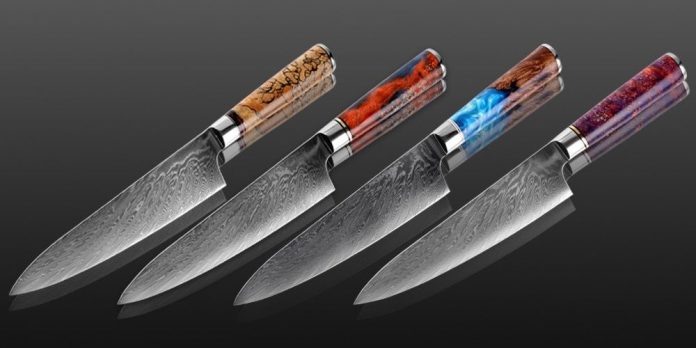Professional cooks will need a sharp and edgy knife to make the catering tasks easier. However, the knives come with different material of blade with own advantages and drawbacks. Some materials will work better on certain catering services than others. Whether you use the imarku chef’s knife, the materials used to craft the blades have a direct impact on their sharpness, strength, and durability. For an average person, it can get confusing to differentiate the blade standards and properties. Read on to understand the knife materials available in the market.
Carbon Steel
Carbon steel is a blade material made from combining iron and carbon. This type of steel alloy maintains extreme sharpness when you properly maintain it. Unfortunately, carbon steel does not have any chromium compounds, which is why they are prone to discoloration and staining when they contact acidic food. However, the count of carbon in iron is high to make the blade exceptionally rigid and strong.
Stainless Steel
Manufacturers commonly use stainless steel to craft kitchen knives because of their great resistance to rust, corrosion, and durability. The material is made from mixing iron and carbon as the base, and chromium is added to give the blade a lasting, shiny design. Chromium plays a role in making the knife blades durable, strong, and stain-resistant. Since stainless steel is available in a variety of alloys, the quality can vary depending on the supplier. Therefore, you can only stock your kitchen knives from professional manufacturers.
Ceramic Blades
Manufacturers usually use zirconium dioxide to harden the ceramic blades. Ceramic is known to possess non-magnetic and non-metallic properties. You will find the ceramic coated in other materials to make it more durable. Chefs may prefer ceramic blades because they are light and though to be hygienic than other blade materials. The bonus of blades crafted from ceramic is that they can be printed with stylish colors, patterns, and details to make an impressive display. However, ceramic is very fragile, meaning it can crack or break when dropped than other materials. The ceramic blade also requires specialized tools for sharpening because the regular whetstones will damage it.
Titanium Blades
Titanium is one of the hardest materials that you can craft into knife blades. It is an excellent material for making strong knives because of its non-magnetic and high resistance to rust characteristics. However, titanium blades may be less sharp and less effective in cutting foodstuff in the kitchen as compared to ceramic and steel types.
Damascus Steel Blades
Different alloys are hammered together to make Damascus steel. Forging these alloys will results in strong steel with an intricate and wavy pattern. Besides creating kitchen knives, the Damascus steel has a long history of crafting swords, knives, and other weapons. The material is characterized by extreme strength, durability, and sharpness. Modern designs are valued for their beautiful appearance.
Conclusion
Once you find the perfect material for your kitchen blades, you will need to sharpen them regularly to keep them working effectively. Store the knives in the right condition, particularly those that are prone to corrosion. Proper care will ensure a prolonged lifespan for the knives and make the cutting tasks easier and safer.










